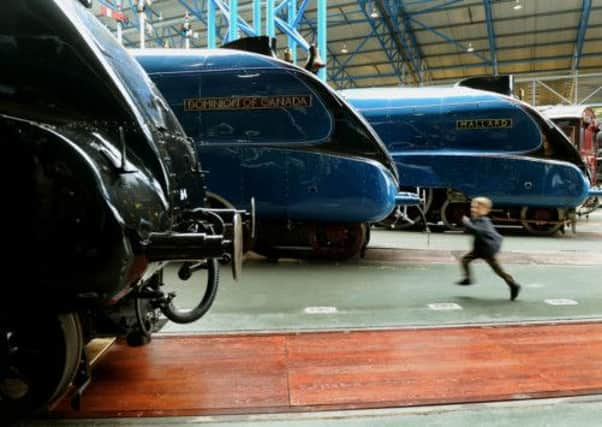Steam engine landmark celebrated at the National Railway Museum


The Dominion has been shipped from Canada, repainted in period garter blue livery and now sits beside the virtually identical Mallard at the National Railway Museum in York.
They are two of six surviving Sir Nigel Gresley-designed A4 locomotives that will be brought together at the museum on the run-up to the anniversary of the Mallard’s 126mph record, which was set on the East Coast Mainline on July 3, 1938 and remains unbroken to this day.
Advertisement
Hide AdAdvertisement
Hide AdBob Gwynne, an associate curator at the museum, said transporting the Dominion from Montreal by ocean liner and flat-bed trains, has been a “very complex process”.
“This is a very special sight because here we have a scene that hasn’t been seen since the 1930s. We haven’t seen this for 75 years or so,” he added.
“It’s great to see it. I don’t think we’ll see this again. It’s a once-in-a-lifetime thing and whether you like trains or not, you have to admire these great machines.
“They always look elegant but they also look like they mean business - and actually, time and again, they did the business.
Advertisement
Hide AdAdvertisement
Hide Ad“In British terms, it’s about as good as it gets. They are some of my favourite steam locomotives.”
Thirty five A4 locomotives were built in Doncaster, South Yorkshire, after LNER decided to roll out a high speed, inter-city train service.
Despite its name, the Dominion of Canada never actually served in North America - it spent its working life as a high-speed service on the mainline between London and Edinburgh.
It was originally called the Woodcock, but its name was changed to reflect Britain’s Commonwealth and international interests when the railways were nationalised in the 1940s.
Advertisement
Hide AdAdvertisement
Hide AdOn its retirement it was restored in Britain 1967 and sent to Canada as a museum piece.
Some railway historians, including Mr Gwynne, believe the Mallard was picked for the land speed record because, unlike the Dominion of Canada, it was fitted with a new performance exhaust which designers wanted to try out. The record-breaker was retired from service in the 1960s and restored two decades later.
National Railway Museum volunteer Robin Gray, 69, from nearby Market Weighton, remembers the first time he saw the Dominion of Canada on a school trip to York in 1958.
“It made a huge impression because it was the first time I’d been close to a locomotive. We were standing in front of it and it was in steam,” recalled Mr Gray, who was 14 at the time and an avid train enthusiast.
Advertisement
Hide AdAdvertisement
Hide Ad“You thought ‘wow’. This was one of the premier locomotives and you knew the Mallard held the world record - and still does.
“It looked magnificent. They had a sound of their own. They were something to be proud of and you knew it was your heritage.”